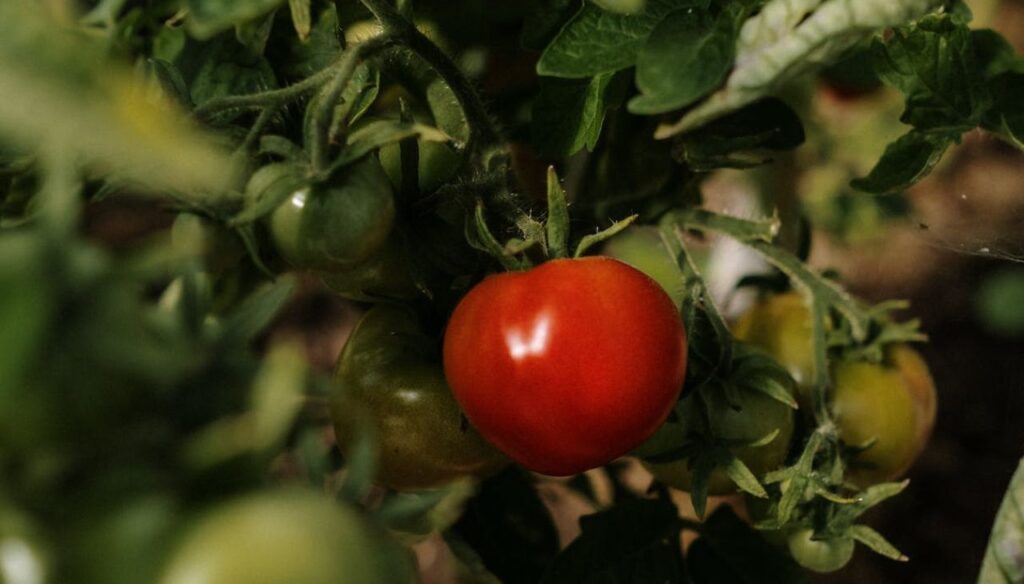Aphids and other pests can ruin tomatoes, the showpiece plants of many backyard gardens. Insects like these can cause serious damage to tomato plants if you don’t get rid of them soon enough. But don’t worry! In this detailed article, we will discuss ways to eliminate aphids from your tomato plants in an eco-friendly way, so your garden stays healthy and flourishing.
Exploring Aphids: The Microscopic Pests
Like many other plants, tomatoes are sustenance for tiny, soft-bodied insects called aphids. These pests multiply quickly, and if left uncontrolled, they can cause plants to develop slowly, have their leaves curl, and even spread diseases. Aphid identification at an early stage is critical for efficient pest control.
How to Remove Aphids from Tomato Plants: 10 Different Ways

1. Make Regular Visits to Your Tomato Plants: Making a Prompt Diagnosis
The act of catching aphids is crucial for effective control. Your tomato plants should be checked regularly to ensure freedom from aphids, which can be identified by clusters of small, pear-shaped insects on the undersides of the leaves and sticky honeydew residues. If the infestation is detected early enough, it can be swiftly and effectively treated, thereby avoiding further damage.
2. Foster Natural Predators: The Best Way to Keep Pests at Bay
Involving aphids’ natural predators is a greener approach to rodent control. Beneficial insects such as lacewings, ladybugs, and parasitic wasps will gorge themselves on aphids without harming your tomato plants. Companion flowers, such as marigolds and alyssums, attract these garden friends and help create an environment where many beneficial insects thrive.
3. Use Water to Displace Them
Because they aren’t very good flyers, aphids can be easily washed away from tomato plants using a strong water stream. Aphids often gather on the undersides of leaves, so it’s best to use a hose with an adjustable nozzle to spray those regions thoroughly. When you see an increase in the number of aphids, repeat the process every few days.
4. Homemade Insecticide Soap: Safe and Effective
Homemade insecticidal soap is an excellent and safe way to control aphids on tomato plants. To make a mild liquid solution, combine one teaspoon of soap (such as Castile) with one liter of water. Make sure to thoroughly coat the damaged areas with the soapy solution by spraying it on. Ultimately, the aphids die because the soap messes with their cell membranes. Apply it again in a few days until the aphid count drops.
5. Neem Oil: An All-Natural Pest Deterrent
Neem oil, an effective natural insecticide derived from the neem tree, kills off aphids without killing off any good bugs. Two tablespoons of neem oil, a few drops of mild liquid soap, and one liter of water make a good cleansing mixture. Be careful to spray the solution onto the undersides of the leaves of your tomato plants as you tend to them. Not only does neem oil keep aphids at bay, but it also keeps other garden pests at bay.
6. An Aromatic Garlic Spray
The natural pest-repelling qualities of garlic are well known. Garlic spray only takes a few cloves of garlic, some water, and a strainer. Garlic extract should be diluted with water, and a few drops of dish soap should be added for adherence. Be careful not to soak the ground when spraying the solution onto the afflicted areas. Not only does garlic spray keep aphids away, but it also helps to prevent them from coming back.
7. Precise Pruning for Pest Control in Infested Areas
It may be necessary to prune the afflicted sections of your tomato plants if the aphid infestation is contained. Get a pair of clean, sharp scissors or pruning shears and cut off the affected stems or leaves. The best technique to keep aphids from returning is to dispose of the clipped material away from your garden. Keep an eye out for any new infestations in the trimmed areas.
8. Planting Companions: A Way to Combine with Nature
In companion planting, plants that complement one another are deliberately placed near each other. If you’re worried about aphids eating your tomatoes, try growing some cilantro, nasturtiums, or basil in the area. The aphid-repelling and ecosystem-building benefits of these companion plants are well documented.
9. Pepper Spray Made at Home: Enhance Your Defense
Make your own pepper spray by mixing water with hot peppers (like jalapeños or cayenne). Pour the mixture through a strainer and add a few drops of dish soap to make it stick. Focus on parts of your tomato plants that are prone to aphids and spray them with the pepper solution. Aphids will think twice about feeding on your plants after you spray them with pepper spray, thanks to its spicy flavor.
10. Organic Pesticides: A Final Option
Use organic insecticides as a final option if the aphid infestation continues despite your efforts. Pyrethrin is a natural pesticide extracted from chrysanthemum flowers; choose products containing this chemical. To reduce the likelihood of harming beneficial insects, use organic pesticides sparingly and always according to the label’s directions.
CLICK HERE FOR MORE INFORMATIVE CONTENT ⇒ How to Remove a Car from Uber
Conclusion
Ultimately, successfully ridding your tomato plants of aphids calls for a mix of attentiveness, all-natural solutions, and a dedication to cultivating a harmonious garden ecology. If you want to grow tomatoes in your backyard without using harmful pesticides, these eco-friendly solutions will keep your plants healthy and produce abundant fruit.